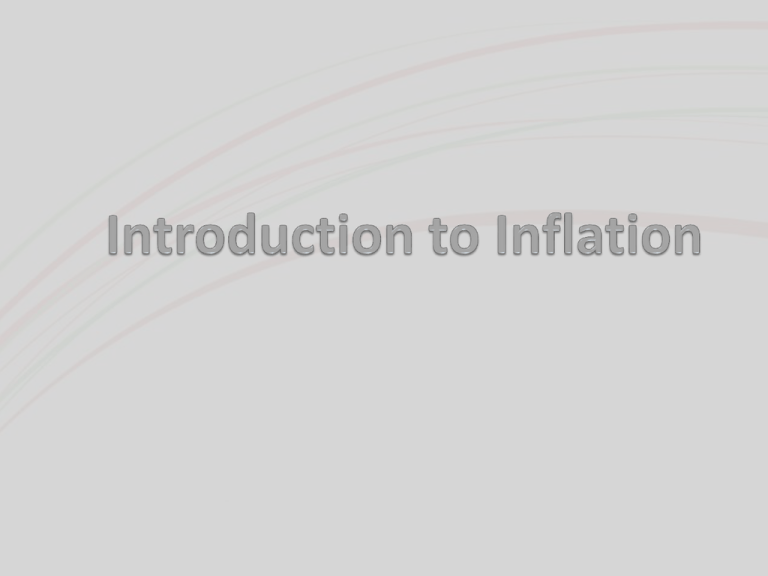Introduction to Inflation
advertisement

Inflation is defined as – ‘a general increase in prices levels’ The government tries to measure inflation each month by pricing a basket of goods that attempts to copy spending by an average family on average income. The main measure of inflation is the CPI – the Consumer Prices Index The ‘basket of goods’ includes food, travel, holidays, insurance, clothes, electrical goods, furniture, and leisure activities like cinema tickets. The government collects the prices of the basket of goods each month. There are in total 650 goods in the basket – and they do change over time. Some of the latest new goods added to the basket are smart phones and apps, and dating agency fees! Inflation History The chart above shows UK inflation for the last 10 years. Although some of the peaks look high, inflation has only been above 5% for 1 month, and the average rate has been around 3%. The Bank of England has a short video on the history of inflation - link UK inflation in the 1970s 25 20 15 10 5 Compare the UK’s low inflation of the last ten years, against the inflation levels seen in the 1970s. Starting at around 6% in 1970, by 1976 inflation had increased to above 20%! Dec-79 Aug-79 Apr-79 Dec-78 Aug-78 Apr-78 Dec-77 Aug-77 Apr-77 Dec-76 Aug-76 Apr-76 Dec-75 Aug-75 Apr-75 Dec-74 Aug-74 Apr-74 Dec-73 Aug-73 Apr-73 Dec-72 Aug-72 Apr-72 Dec-71 Aug-71 Apr-71 Dec-70 Aug-70 0 Why high levels of inflation are bad Higher prices of UK goods mean we export less – so jobs are lost. Firms invest less, meaning less jobs in the future. Goods made abroad become less expensive compared to UK made goods, so imports increase – more jobs lost. Unless workers have pay increases at least as high as inflation then their standard of living will fall. High inflation often means high interest rates – people may not be able to repay mortgages, so lose their homes, and higher borrowing costs can mean firms can go bust. People with savings find that the spending power of savings falls - so they become poorer. Hyperinflation Just occasionally inflation gets really out of hand, and prices start rocketing up – prices may double in a year, a month or even a day! In Germany in 1922-23 prices went up more than a little. Inflation in the year to June 1922 was 600% Over the next year it increased to 18000% And by the end of 1923 prices of goods were 1 million times higher than a year earlier – if this were to happen in the UK a loaf of bread would cost a £1m, a litre of petrol £1,300,000, an iPad £400,000,000. Going shopping in Germany 1923 Burning money to stay warm How does the government control inflation? The government has an inflation target of 2%. To keep inflation around this level, it asks the Bank of England to change interest rates, according to economic conditions. Prices increasing - interest rates up. Prices falling - interest rates down. This system has worked quite well for the last 15 years, but there are problems at the moment – to find out more see the notes and PowerPoint on Interest Rates.









